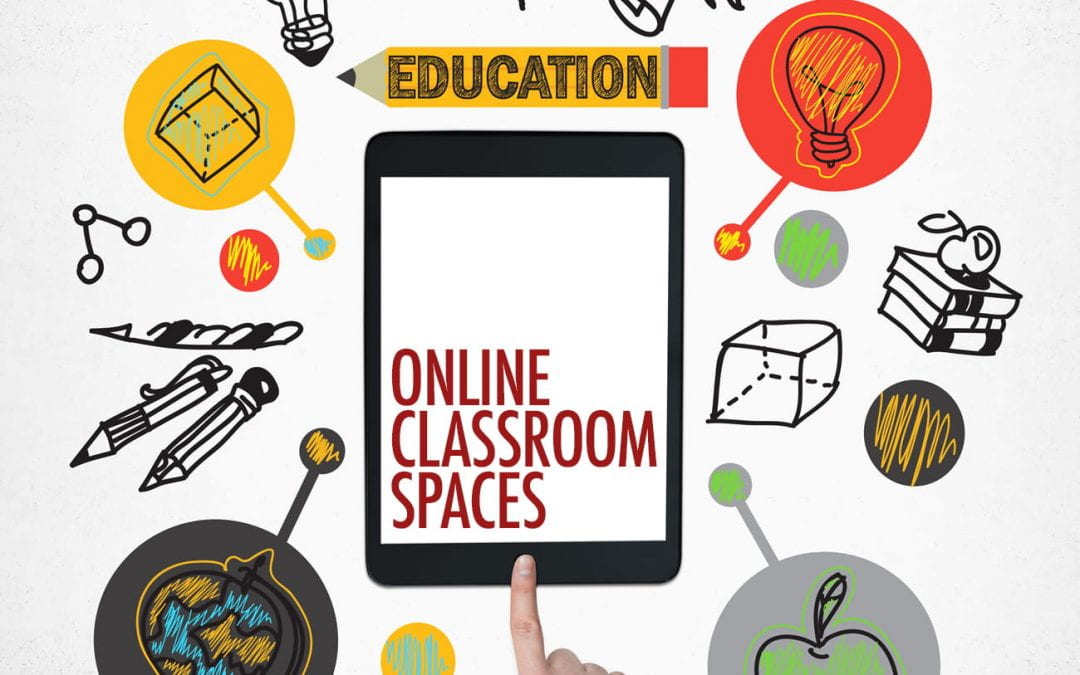I remember the first online course I took, as well as the first hybrid course I took. I was filled with anticipation as I logged on to those first classes. What was online and hybrid education? How did it work? How would it be different? How would the social component of education be addressed and translated into an online course? What would content look like in this space?
 One of the first things I noticed about my new ‘classroom’ was that is was often as sparse as my classes that took place in physical spaces. Once you leave the K-12 world, the classroom is often more of a generic space, where teachers and faculty strive to move into a world of ideas that rely less on ambience, design or visual adornment. Of course, we all understand that the nature of faculty assignments to lecture halls and classrooms often makes them transients on their own campuses. And after all, wouldn’t it be sort of silly if we saw an instructor taping vocabulary words or images to a blackboard the way they did in elementary and secondary school? By way of tradition (and for other reasons), most post-secondary learning environments usually don’t contribute a great deal to the learning experience unless you work in a lab or studio environment.
One of the first things I noticed about my new ‘classroom’ was that is was often as sparse as my classes that took place in physical spaces. Once you leave the K-12 world, the classroom is often more of a generic space, where teachers and faculty strive to move into a world of ideas that rely less on ambience, design or visual adornment. Of course, we all understand that the nature of faculty assignments to lecture halls and classrooms often makes them transients on their own campuses. And after all, wouldn’t it be sort of silly if we saw an instructor taping vocabulary words or images to a blackboard the way they did in elementary and secondary school? By way of tradition (and for other reasons), most post-secondary learning environments usually don’t contribute a great deal to the learning experience unless you work in a lab or studio environment.
This can and will change over the coming years.
Though it may seem a little like pie in the sky in academia or cost prohibitive in education, the New York Times Online has created some fine examples of combining text, images, video, animation, weather maps and commentary to pass on information in a unique way and create an online environment for a story. Look at the story called Snowfall: The Avalanche at Tunnel Creek. Can you imagine applying this type of multimedia treatment to a central concept you are teaching? Or imagine E-textbooks that took this approach? Would it engage students? Imagine students going to your online class and thinking about it as an actual learning space and not just a repository for a syllabus and directions to texts and videos a student needs to watch. Imagine if they received a new set of VR (virtual reality) glasses that helped enhance certain things you had put in your course the week before class started. Possibly not so far-fetched, the New York Times is currently sending paid subscribers exactly this item to view special video news stories they are putting online.
The real upside of using several of the LMS’s out there, is that it allows you to build a robust learning space or environment over time– an environment you may save and bring with you to your next class. Over the last few years I have worked with faculty who transformed potentially dry subjects like ‘research methods’ by building out colorful, image-rich pages with their favorite researchers and the research that inspired them to approach the subject with passion and with a literature instructor who created montages of images and paintings of the authors covered in class, as well as compiled collections of quotes about the books the class is reading by other famous writers. And then there was my programming professor, who loved his collection of common programming errors made by beginners and intermediate programmers and turned them into information pages in his class, as well as built a collection of original programs done by students for labs that he would post after we turned in our lab assignments, illustrating some imaginative ways we could approach assignments. These particular faculty embraced their online or hybrid course as learning spaces that could also inspire. as well as hold content for their classes. Something to consider the next time you start planning a new class or making changes to a current class.


Online classroom spaces have helped so many people, and that’s important. I can do my assignment easily now, and it’s because of these spaces. Whoever thought of this needs to get an award.